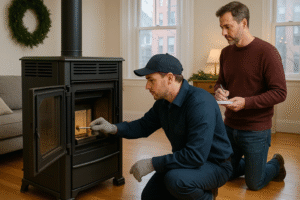
When it comes to handy kitchen supplies, butter paper is one of those unsung heroes you didn’t know you needed—until you run out of it. Often confused with parchment paper, butter paper serves a unique purpose in both household and professional kitchens. But its uses extend beyond baking. Whether you’re wrapping, lining, or even crafting, butter paper is a versatile, must-have material.
In this article, we’ll explore the top 5 uses of butter paper you should definitely know about, with helpful insights into using butter paper rolls, butter paper sheets, and butter paper covers for different needs.
1. Wrapping Food for Storage and Presentation
One of the most common uses of butter paper is wrapping food. It’s lightweight, slightly non-stick, and doesn’t let oil or moisture seep through easily. This makes it ideal for wrapping:
- Sandwiches
- Bakery items like cookies or pastries
- Cheese and deli meats
- Homemade snacks
Unlike plastic wrap, covers allow food to breathe slightly, which can be especially useful for baked goods that you don’t want to go soggy. Plus, butter paper gives your food packaging a more rustic, natural look—perfect for lunch boxes, party platters, or eco-conscious presentation.
Pro Tip: Use a roll to easily tear off sheets for wrapping, especially if you’re prepping large quantities for events or meal prep.
2. Lining Baking Trays and Molds
This is perhaps the most well-known use of butter paper, especially among bakers. sheets are excellent for lining baking trays and pans before pouring in your batter. They create a barrier between the metal surface and your baked goods, preventing sticking and making cleanup a breeze.
You can use it for:
- Cookies
- Brownies
- Cakes
- Pizza bases
- Pastries
Although butter paper is not heat-resistant like parchment paper, it’s often used in combination with a light layer of oil or butter to make removal easier. If your recipe calls for a non-stick surface and you’re using a roll, just cut the size you need and grease it lightly before use.
Note: Always check the specific type of butter paper you’re using—some are only suitable for low-temperature baking or may need greasing.
3. Art and Craft Projects
Butter paper isn’t just for the kitchen—it’s a favorite among artists, students, and crafters. Thanks to its semi-translucent and smooth surface, it’s ideal for a variety of art and craft applications:
- Tracing drawings or blueprints
- Layering in scrapbooks or journals
- Creating stencils for painting
- Gift wrapping with a unique texture
It’s especially useful for kids’ art projects where they need a surface for coloring, outlining, or layering without using expensive specialty paper. Teachers and art students often keep sheets in bulk for school assignments and creative projects.
4. Separating Layers of Food
Ever stored a bunch of freshly made rotis, parathas, or burger patties only to find them sticking together later? That’s where butter paper saves the day.
Place butter paper sheets between layers of:
- Flatbreads
- Pancakes
- Cookies
- Meat or veggie patties
This prevents them from sticking and makes it easier to remove individual items when you’re ready to serve or cook. It’s especially helpful when freezing items like cutlets or uncooked pastry so you can separate portions quickly without breaking them.
Using covers in your containers also keeps items from becoming too moist or clumping together.
5. Grease-Free Microwave and Fridge Use
Butter paper is excellent for covering bowls or plates when microwaving food. It prevents splatters and helps heat food evenly while avoiding the sogginess that plastic wrap can cause. It’s also microwave-safe (at low to moderate heat), which makes it perfect for:
- Reheating leftovers
- Covering food without sealing in steam
- Storing items in the fridge or freezer without condensation buildup
Unlike foil, butter paper won’t cause sparks in the microwave, making it a safer option. And because it absorbs a bit of excess oil, it helps keep your reheated food less greasy.
Bonus Tip: Choose the Right Form
Depending on how you plan to use butter paper, you might prefer different formats:
- Roll – Great for flexible cutting and wrapping; ideal for large kitchens or frequent use.
- Sheet – Pre-cut and ready to use; convenient for baking trays or wrapping sandwiches.
- Cover – Shaped or folded for specific food containers; useful for storing or gifting.
Investing in the right type makes your kitchen or craft time more efficient and mess-free.
Final Thoughts
Butter paper is one of those multi-use items that you’ll wonder how you lived without. Whether you’re baking a cake, wrapping up lunch, or organizing your freezer, it is there to make your life easier—and cleaner.
From the convenience of a butter paper roll to the precision of butter paper sheets or the practicality of butter paper covers, this simple item has dozens of everyday uses. It’s not just for bakers—it’s for anyone who wants to wrap, bake, create, or organize with a little more ease.
So next time you’re shopping for kitchen essentials or stocking your art supplies, don’t skip the it’s aisle—it might just be the most versatile tool in your drawer.






